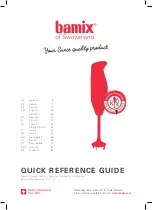
Glossary
289
02R User’s Guide
Glossary
A/D converter
—The conversion of analog signals into digital signals. The
analog signal is sampled every few milliseconds and its level is quantized
into a digital word. The larger the digital word, the more accurate the
representation of the analog value. See Quantization and Sampling frequency.
The 02R uses 20-bit linear analog-to-digital converters for most of its analog
inputs.
Aliasing
—A form of distortion which can occur during the conversion of
analog signals into digital. If the input signal is more than one half the
sampling rate, only portions of the signal will be present when the system
samples the waveform. A false image of the waveform, based on the
components that were actually sampled, is created.
A system which samples at 48 kHz can correctly process signals of up to
24 kHz. To remove signals above the Nyquist frequency (see Nyquist
Sampling Theorem), all A/D converters employ anti-aliasing filters. The 02R
employs over-sampling A/D converters to allow the anti-aliasing filter to
be performed in the digital domain. See over-sampling.
Attenuation
—After the signal has been converted to digital, the 02R can
apply numerous forms of signal processing, such as equalization or effects.
Some of these processes may boost the signal to digital clipping. The 02R
allows you to attenuate the digital signal to reduce the chances of clipping.
Automix system
—The 02R has an on-board Automix system that
memorizes fader positions, switches individual channels on or off, adjusts
the equalization or pan positions, and changes the auxiliary sends—all
based on timecode. It can recall scene memories and programs from the
EQ, effects, dynamics, and channel libraries, also determined by the
recorded timecode. You can record an entire mixing session, and then edit
the individual channel settings in multiple passes. You can punch-in to fine
tune a specific parameter or you can use one of the event editors to adjust
the timecode position of channel settings or scene and library changes.
Automix Memory
—The Automix system records each parameter change
and the associated time as an event. The parameters that are recorded
include fader movements, channel status and EQ changes, and library
recalls. The more complicated the mix, the more memory it consumes. The
02R has a default of 480 kbytes of Automix memory.
Auxiliary send
—The auxiliary sends are used to feed signals from the
input or tape return channels to external effects processors, amplifiers, or
multitrack recording equipment. The 02R has eight auxiliary sends. Two of
the sends feed the internal effects processors. See Internal Effects.
16















































